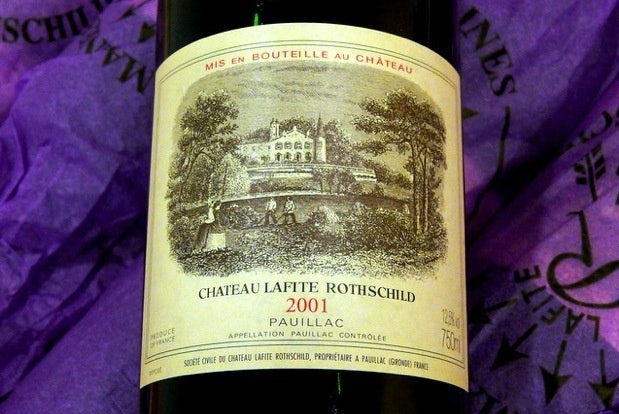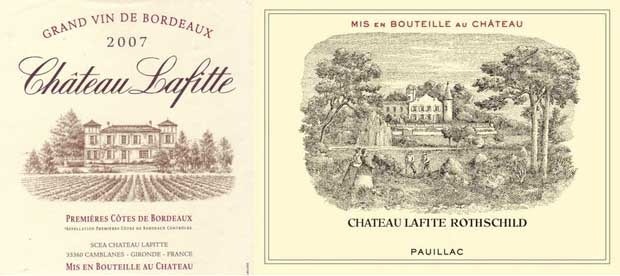
Château Lafite Rothschild is known for being amongst some of the world's most expensive wines. (Flickr/cumi&ciki)
On the 250th anniversary of the founding of Bordeaux winery Château Lafitte, owner Phillipe Mengin decided that it was time to break into China’s booming wine market. Just as his trademark application was about to go through, he found himself beset by a familiar obstacle: his application was contested on grounds of infringement. Château Lafite Rothschild, red wine giant and producer of some of the world’s most expensive wines, had claimed that Mengin’s application was unfair use of Château Lafite’s name.
The fight to use the name “Lafitte” is not new to Mengin, for Château Lafite Rothschild had taken Château Lafitte to court before in France. The highest courts ruled in favor of Mengin in 2008 and allowed him continued usage of the name, since the two companies made products that had different logos and different prices—a 2010 Château Lafitte costs about £20, while a 2010 Château Lafite Rothschild can fetch a hefty £6,500 for a 12-bottle case on the Liv-ex trading platform.
“We are well aware that we have neither the networks nor the financial situation of our long-standing accuser, but we hope that by publicizing the case as much as possible, they will at last agree to abide by common sense and submit to the court rulings that have once and for all recognized that our rights to Château Lafitte are older and superior to those of Château Lafite Rothschild,” Mengine told The Drinks Business. “Just because we are less economically powerful does not mean that our rights should not be recognized.”

Despite similar looking names, the two red wines have different labels and price points.
It is little wonder that Château Lafite Rothschild would want to keep the playing field in China in its favor. After all, China has become the world’s largest market and consumer of red wine, consuming some 1.86 billion bottles of red wine in 2013, a 136 percent increase over the last five years.
This case is different from Château Lafite Rothschild’s typical crusade against IP infringement in China in that it is against a fellow French company, rather than against one of many Chinese counterfeiters hoping to cash in on its prestigious name. In 2011, Lafite Rothschild successfully stopped Chinese company Shenzhen Jinhongde Trade Co. from using the name “Lafite Family.” China, known for its rampant counterfeits, has seen many fake Lafite Rothschilds, where it is estimated about 70 to 80 percent of all Château Lafite Rothschild bottles sold are fake. As a result, Lafite Rothschild has issued some 300 injunctions against trademark infringement in China to date.
A spokesperson for Domaines Barons de Rothschild, owner of Lafite, said in a statement defending their action against Château Lafitte: “As one of the most recognized brand names in China, this is part of an ongoing battle to control the unauthorized use of our name in various global markets.”
It is unclear whether Château Lafitte may be seen as a mere Lafite imitator, since Château Lafite Rothschild enjoys the advantage of brand recognition in China. The Chinese courts are not obliged to mirror the French courts’ decisions, but that summary will certainly be brought up in Lafitte’s defense.